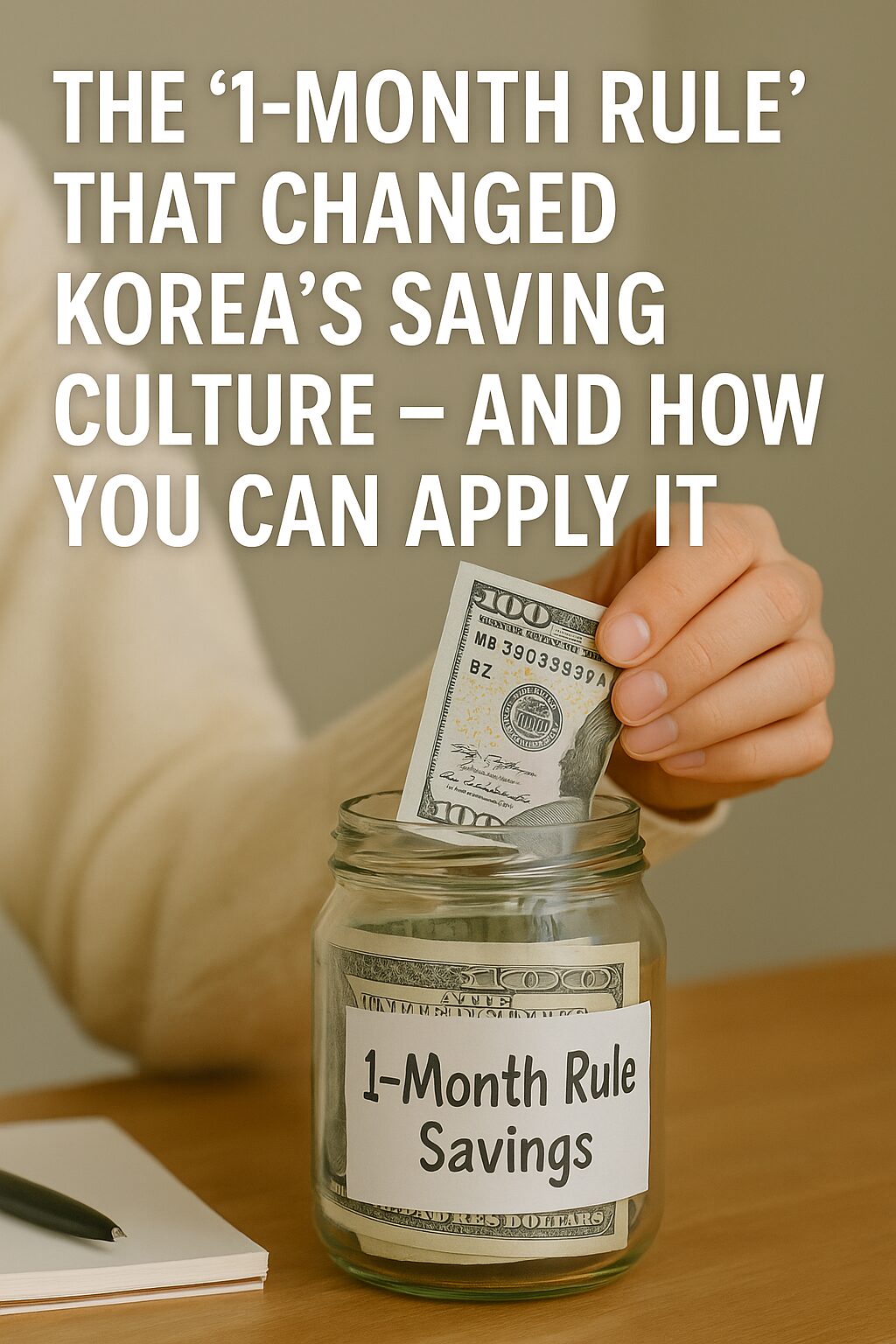The 1-Month Rule: Korea’s Quiet Saving Technique
South Korea may be known globally for its tech, fashion, and food — but beneath the surface lies a powerful, often-overlooked financial habit: The 1-Month Rule.
This quiet practice is used by many Koreans to cut out emotional purchases, reduce lifestyle inflation, and improve their long-term savings. It’s not flashy, but it works — and that’s exactly why the world needs to pay attention.
What Is the 1-Month Rule?
It’s simple:
If you want something that’s not essential, wait 30 days before buying it.
That’s it. No complicated budgeting. No guilt. Just time and reflection.
By delaying gratification, the 1-month rule creates space between wanting and spending.
Why This Rule Works So Well
1. Reduces Emotional Spending
Shopping is often emotional. We buy because we’re bored, stressed, or want a quick dopamine hit. By waiting, you allow those emotions to fade — and clarity to take over.
2. Trains Delayed Gratification
Long-term wealth requires discipline. This rule subtly trains your brain to value future freedom over present comfort.
3. Cuts Out Impulse Traps
Online shopping, social media ads, and flash sales thrive on urgency. The 1-month rule shuts that down instantly.
4. Encourages Intentional Living
When you buy less, you focus more on why you buy. You begin asking, “Does this align with the life I want?” That’s powerful.
Real-Life Examples from Korea
- Home appliances: Many Koreans delay replacing appliances until they truly break. Even then, they research for weeks.
- Trendy fashion: It’s common to wait 30+ days before buying any trend. If it’s still in your mind, it might be worth it. If not, you save.
- Subscriptions: Before starting a new paid app, Koreans often trial it or delay it until the next month to see if it’s necessary.
How to Apply It in Any Country
You don’t need to live in Seoul to benefit. Here’s how to adopt the 1-Month Rule:
Step 1: Create a “30-Day Buy List”
Make a simple note or calendar. When you want to buy something, write it down — with the date.
Step 2: Set a Reminder
Use your phone or planner to remind you 30 days later. If you still want it, revisit with logic.
Step 3: Track Your “Didn’t Buy” Wins
At the end of each month, total how much you didn’t spend. Transfer that into savings or investing.
Next-Level Tip: Pair with Micro-Saving Apps
In Korea, apps like Toss and KakaoBank allow people to round up change or auto-transfer small amounts.
You can mimic this with apps in your country (e.g., Acorns, Qapital). When you say “no” to a purchase — automate a transfer of that amount to your savings.
Mindset Shift: This Is Not Deprivation
The 1-Month Rule isn’t about denying yourself forever.
It’s about removing urgency, creating space, and making intentional choices.
You’ll be amazed how much lighter and more powerful you feel — not because you bought something, but because you chose not to.
Try This Now:
- Choose one thing you want to buy this week.
- Write it down.
- Set a reminder for 30 days.
- Reflect.
- If you don’t buy it, transfer the money into savings.
Do this with just 2–3 purchases per month — and your finances (and mindset) will shift dramatically.
Coming Up in Part 5:
Top 3 High-Impact Saving Habits Koreans Swear By – And How to Start Them Today
→ We’ll reveal three powerful but underrated Korean savings habits that are transforming lives — from daily automation tricks to long-term investment mindsets. Easy to apply, anywhere in the world.

